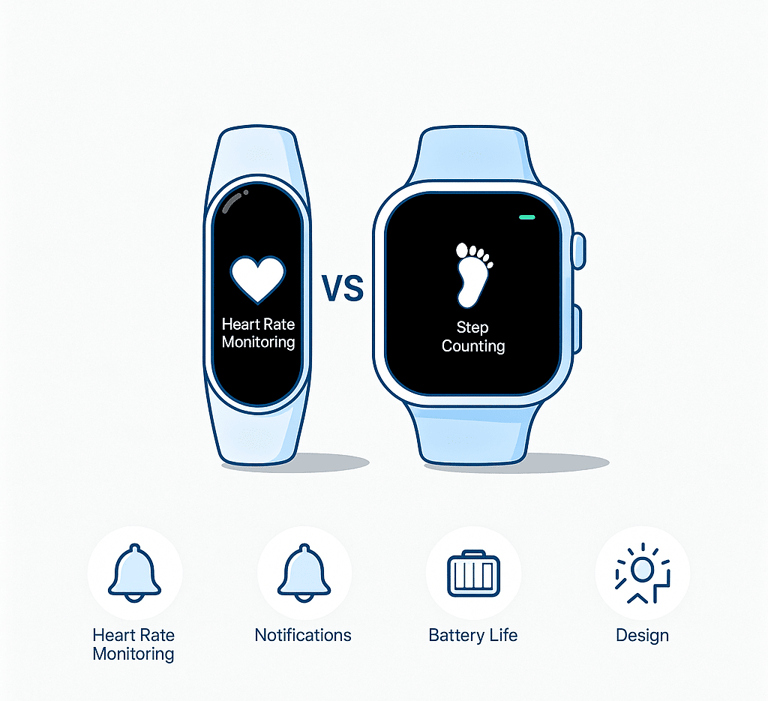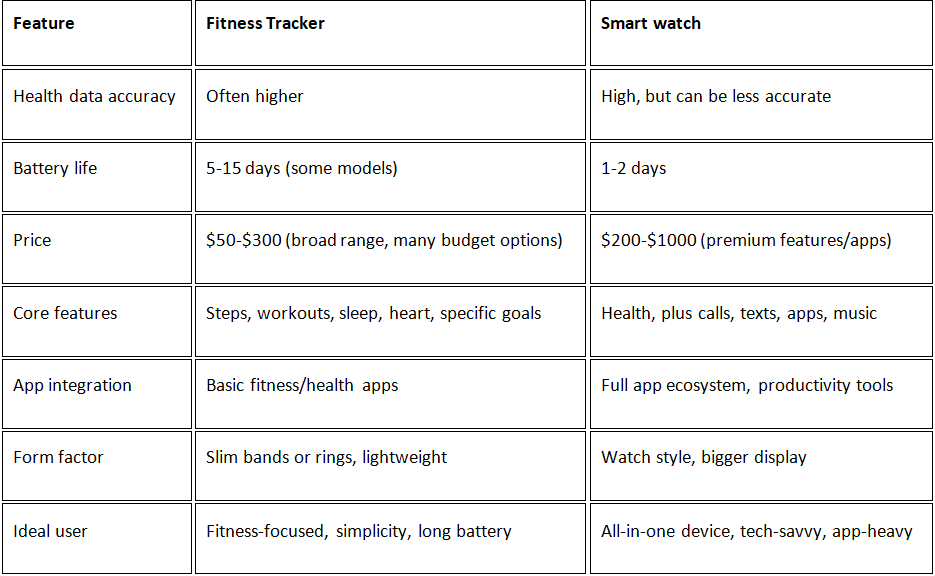Fitness Trackers Or Smartwatch
Fitness trackers and smartwatches are two of the most popular types of wearable health technology today, but they serve different needs and lifestyles.
COMPARISONS


Fitness trackers and smartwatches are two of the most popular types of wearable health technology today, but they serve different needs and lifestyles. Both collect key health data and help users develop healthier habits, yet the choice between them often comes down to features, price, and what users want to achieve with their device.
Fitness Trackers: Purpose-Built Performance
There’s something honest about a good fitness tracker. It doesn’t try to be a life coach, inbox,—it just quietly tracks every step, calorie, and minute of rest. A solid tracker, like the ones from Fitbit or Garmin, sits so light on your wrist that half the time people forget they're even wearing it. It’s almost like having a silent little coach, always reminding you that, hey, maybe just one more lap around the block wouldn’t hurt.
Most don’t bother much with apps or notifications. They’re about simplicity, accuracy, and the freedom to go well over a week—sometimes even two!—between charges. That’s a game changer for anyone who’d rather be actually moving than tethered to an outlet every night.
Sales? These things are hot—over a million flew off shelves in just the first half of 2025 in the US alone. And for anyone tired of a wrist gadget, smart rings are taking off, offering the same health insights without even needing a display. Seriously, it’s like the health version of a wedding ring—just way smarter.
Smartwatches: The All-in-One Wrist Computer
Then you’ve got smartwatches. These aren’t just about steps—they’re about juggling reminders, tracking heartbeats, replying to texts, controlling playlists, and sometimes reminding wearers to breathe when work gets tense. Apple and Samsung are the big hitters here, offering devices that are so much more than step counters. Some can check for irregular heart rhythms, warn about sleep apnea, and (curiously) pop up an SOS if someone takes a tumble.
But these features come at a price—mainly, battery life. Nearly every smartwatch needs a nightly or every-other-day charging date. They’re a bit chunkier, heavier, and some days they might even feel a tad much. But for those who like living at the crossroads of tech and health, they’re worth every gram and notification buzz.
Current Market Landscape and Growth Outlook
Fitness tracking is big business—$70+ billion and climbing. With rings, bands, and even stick-on trackers, there’s something for every taste (or disdain for screens). Smartwatch adoption is growing too—almost 22% of adults globally have one, but markets are shifting. While tons of people are happy with their current device, the fancier stuff (ECGs, crash alerts) is what’s really luring new buyers in.
The Human Perspective
Here’s the thing: fitness trackers and smartwatches aren’t battling for world domination. They’re just answering different questions. Is tracking steps, sleep, and heart rate (without managing messages or apps) enough? Or does life (and sanity) depend on getting a gentle tap when a calendar event is about to go off? Some love the invisible help—the sleep boost, the nudge to stretch. Some want their whole world on their wrist.
Wearables are like that friend who always keeps you honest. Sometimes bossy, sometimes a lifesaver, often a quiet motivator. The best part? There’s no wrong answer—just the right device for today’s you.
If that sounds a little less “AI” and more like something overheard in a coffee shop, that’s the point. Life (and wearable tech) is personal, messy, and always changing. And that’s exactly what makes the choice so interesting.
Head-to-Head Comparison
Data-Driven Insights
• By the end of 2025, the Fitness tracker industry is projected to grow by 13%. thanks to AI developments offering enhanced personalized insights.
• In 2025, conventional wrist fitness tracker sales fell by 6%, whereas new categories (especially smart rings) are flourishing as consumers seek more subtle options
• The highest smartwatch adoption occurs in individuals aged 18-34 and in North America (23% ownership), with women leading men in usage.
• Although widely adopted, the "repeat purchase" rate and Daily engagement of smartwatches in certain countries have leveled off, indicating a maturing market that now emphasizes quality and advanced functionalities.
Practical Takeaway
Select a fitness tracker for dependable, straightforward health tracking, extended battery life, and an affordable price. Choose a smartwatch if a variety of smart functions (calls, messaging, apps) is essential along with fitness tracking, and if regular charging is not a concern For health obsessives, premium smartwatches like the Apple Watch can rival or surpass dedicated trackers in sensor breadth and medical alert functions, though at a premium price



